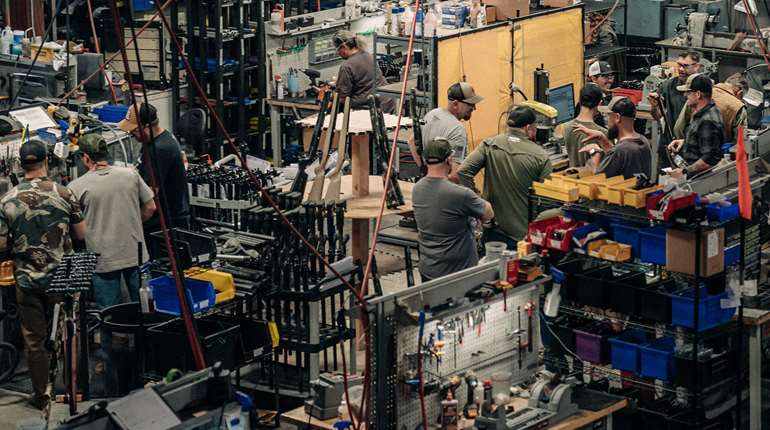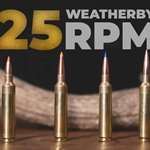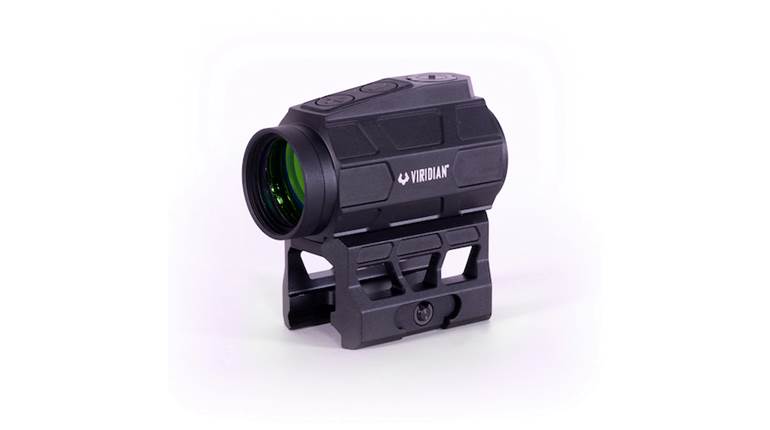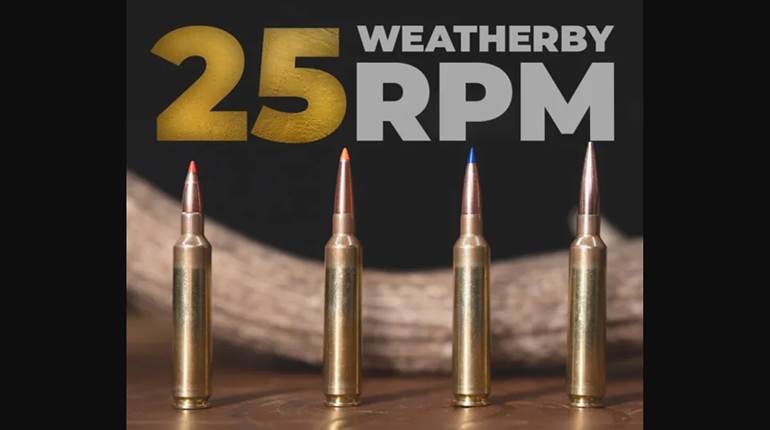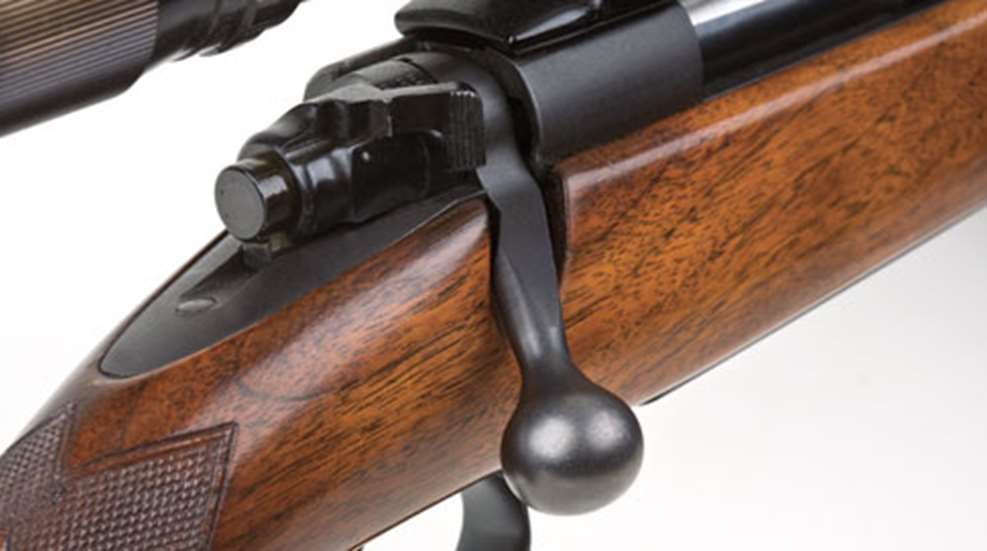
3/12/2013
What is it about a hunting rifle that evokes such strong emotions? For many of us, our prized rifle-be it the quintessential lever-gun, a sleek turn-bolt or even a slick self-loader-ceases to be a tool, instead becoming a journey that defines us. First, there is the long and contemplative search, one often so exhausting it leads to both elation for the acquisition, and remorse for the end of the search. In that, finding a hunting rifle mirrors the range of emotions most of us feel when using it for its ultimate purpose, the killing of our quarry. And like the connection we earn for the game we chase, that emotional attachment to the rifle is hard-won, earned through countless hours at the range, mind-numbing hours at the bench, and if we’re lucky, through decades of hard use in rough country-from the hot, humid bottomland swamps of the south, to the blustery North woods, to the wide-open plains, to the nearly inaccessible, foreboding mountains of the West. To truly win our hearts, that rifle must take everything we can dish out at it, yet deliver when called upon without fail.
So any list that attempts to rank the greatest hunting rifles of all time is at best an exercise in futility. For if one hunter spends a lifetime using one rifle, how can another man tell him any other gun is greater? Nevertheless, we’ve taken on the daunting task of making such lists. And our criteria is pretty strict, as we’ve taken into account innovation, effectiveness, production numbers, impact on the sport of hunting and influence on future designs. Then we argued with much enthusiasm, voted individually, and averaged up the votes. And while we can’t claim the results definitively name the 10 greatest hunting rifles of all time, it does illuminate what kind of hunters we are, and where our interests lie. But more than anything, I hope this list will spark another round of debate on just what it is that defines a great hunting rifle.
Because it’s the singular greatness of that design that so often becomes a definition of one’s self. The Remington Model 700 hunter becomes a Remington man, green to his very core, while a Winchester Model 70 man is equally red, a Winchester man to the bone. So the hunter becomes a part of something bigger, choosing a side in the endless debate over who is better. It’s Ford vs. Chevy, Republican vs. Democrat or Red Sox vs. Yankees. It’s that fundamental characteristic that we’ve both earned and inherited as a free people. In short, it’s a uniquely American endeavor. With that, let the debate rage on forever. -Chad Adams
No. 1-Winchester Model 70
Winchester’s 1925 introduction of the Model 54 bolt-action rifle correctly anticipated the shooting public’s demand for a rifle suited for all manner of sporting tasks from target shooting to big-game hunting. Until then, most bolt-actions used for hunting were little more than sporterized military rifles: the Springfield ’03, Model 1917 Enfield or Mauser 98. With the Model 54, Winchester offered consumers a rifle that was much trimmer and more attractive than battlefield bolt guns and that had a hinged floorplate assembly to boot.
And while the Model 54 was not perfect-it had a stamped steel triggerguard-it formed the basis for what many consider the greatest field sporting rifle of all time: the Model 70. Introduced in 1936, what would become known as the “Rifleman’s Rifle” gave sportsmen all the features they required-right out of the box. With the Model 70 there was no need to drill and tap the receiver for scope bases, and there was no need to alter the bolt handle or safety to accommodate scope mounting. Its coned breech sped cycling, protected bullet tips and helped give it a fast, slick-feeling action. Most of all, its Mauser-type claw extractor provided true controlled-round feeding.
A myriad of chamberings and configurations followed through the pre- and post-war years. But antiquated manufacturing methods meant that, by the 1960s, the Model 70 was practically a semi-custom gun requiring inordinate amounts of hand fitting. It simply wasn’t a profitable proposition. When Winchester economized the Model 70 in 1964 by making it a push-feed design and giving it impressed checkering, shooters cried foul. It would take until the advent of the Classic “pre-’64”-style Model 70 nearly 30 years later to simmer them down. The Classic was made in New Haven, Conn., just as Winchester guns had been for more than 140 years, but this time on modern CNC equipment. Most important, the Classic returned the claw extractor, true cut checkering and a remarkably good grade of walnut for the time.
The 2006 closure of the old facility and the news that the Model 70 would once again be made by Winchester parent company Fabrique Nationale-this time at the latter’s Columbia, S.C., M16 and machine gun plant-reassured loyal Model 70 shooters that their favorite rifle had not ridden off into the sunset for good. The newest Model 70 is, once again, ready right out of the box for the biggest adventures the shooting sports have to offer. -Brian C. Sheetz

No. 2-Winchester Model 1894
Designed by the legendary John Moses Browning, the Model 1894 lever-action rifle was the first American hunting rifle designed specifically for cartridges containing smokeless powder. Offered initially in .38-55 and .32-40 Win., the 1894 was first paired with a new smokeless cartridge in 1895 that would become almost synonymous with the rifle-the .30-30 Win. While not as slick in operation as the ’92, the stronger rear-locking ’94 could chamber rifle-as opposed to pistol-cartridges. It has been made in so many variants-carbines, rifles, trappers, saddle ring carbines, muskets, factory engraved, fancy sporting, plain-Jane Sears Roebuck models, etc.-that space precludes listing them all. In addition to those already mentioned, ’94 chamberings have included .219 Zipper, .25-35 Win., .307 Win., .32 Win. Spl, .348 Win., .356 Win., .357 Mag., 7x30 Waters, .375 Win., .44 Mag., .444 Marlin, .45 Colt and .450 Marlin.
It may have come too late to have “won the West,” but it became one of the greatest “woods” guns of all time, and the ’94 staked a claim in the hearts and minds of American shooters and hunters. It became an American classic and icon-one that suspended production with the close of U.S. Repeating Arms in 2006. How strong is its appeal? By 1993, around 1 million ’94 commemoratives alone had been produced-and that number has risen dramatically since. That’s in addition to an estimated 7 million or so regular-production guns. Now that’s appeal. -Mark A. Keefe, IV
No. 3-The American Longrifle
Known by many names-the Pennsylvania, Shenandoah or Kentucky-the American longrifle is by any name arguably the most important firearm in the history of America. From the French and Indian Wars, through the American Revolution, and to the Frontier period up until the rise of more modern percussion systems, the American longrifle was the most accurate, long-range rifle the world had ever seen. It rightly belongs on both our top 10 lists, but it was a hunting rifle first. In the hands of Daniel Morgan’s riflemen, the gun put fear into the hearts of the Redcoats. Later, when the British returned for another go with the fledgling Yanks, in the hands of Kentucky volunteers led by Gen. Andrew Jackson, the American longrifle helped deliver America’s most significant military victory at the Battle of New Orleans. With patterns so individual that historians can determine the region in which an arm was built, the American longrifle emerged as the height of its particular form. Featuring a long, octagonal barrel, often exquisite wood and brass furniture, form followed function, resulting in a work of art capable of lethal accuracy past 200 yards. For nearly a century the American longrifle was all things to a people who had undertaken the most daunting of tasks-creating a new world. It put food on the table, while protecting the family in a hostile frontier. And when called upon, it fought to win independence, and then again to protect that freedom. In short, the American longrifle exemplifies the very epitome of the Second Amendment. For when the framers wrote that fundamental bedrock to America society, it was-at least in part-the American longrifle that had armed “a well-regulated militia,” striking down tyranny, giving birth to democracy and forever establishing freedom on American shores. -Chad Adams
No. 4-Remington Model 700
Introduced in 1962-in conjunction with the then-new 7 mm Rem. Mag chambering-the Remington Model 700 represented an across-the-board refinement of the Models 721, 722, which debuted concurrently, and the subsequent Model 725. The resultant rifle was of exceptional strength due to its “three rings of steel” construction, inherently accurate and had sleek, sensuous lines. With Winchester’s debacle but two years later, the market would soon be ripe for a quality, accurate bolt-action rifle like the Model 700. To date, more than 5 million Model 700s have been produced.
The Model 700 sported a push-feed action, as compared to the renowned controlled-round-feed version of the Model 70, a bolt with dual-opposing locking lugs (for 90-degree lift), a swept-back handle, jewelling (beginning in 1969) and a plunger-type ejector, the latter of which is widely copied even today. It had a cylindrical receiver, extended bolt shroud (1969 change), two-position safety, single-stage trigger, and fast, 3.2-millisecond locktime, among other noteworthy features. Besides cosmetic changes or new chamberings, little has changed since the Model 700’s introduction-a testament to the design. The Model 700’s reliability and accuracy have endeared it to generations of hunters and competitive shooters. The next time you take to the range or field, take note of how many trophies-animals or plaques-are rewarded to those using the Model 700. You might be surprised. -Aaron Carter

No. 5-Ruger 10/22
When it came to firearms, Bill Ruger had a keen eye for guns of classic form and functional design. And judging from the number of so-called International, or Mannlicher-stocked, models that have appeared under the Ruger banner throughout the years, the rotary-magazine-fed Mannlicher-Schoenauer was one of those. So it isn’t surprising that when Ruger set out to design a .22 rimfire he incorporated the rotary magazine. It helped make the little 10/22, introduced in 1964, trim and easy to carry and provided just as many shots as guns whose tubular magazines were awkward to reload or those whose clip magazines protruded from their stocks’ bottoms and made carrying at the balance point uncomfortable.
As firearms accessorizing became more of a home-gunsmithing proposition, another one of the 10/22’s clever design features gave it a huge leg up on the competition: Its barrel could be switched out for a more accurate, target-profile type by anyone with only an Allen wrench and a few minutes to spare. From such modularity sprang a huge cottage industry of aftermarket 10/22 parts and accessories occupying dozens of pages in gun parts suppliers’ catalogs.
According to Ruger, the 10/22’s production totals are well on their way to the 6 million mark-a remarkable figure for any commercial firearm. Today it is available from the factory in a variety of configurations, including a “compact” version and a competition-ready heavy-barreled model with a wildly configured laminated thumbhole stock. Ruger has even reinvented the basic design in a pistol configuration called the Charger.
So even though you can no longer buy the 10/22 from the factory with a Mannlicher stock-yes, Ruger made them in walnut, birch and laminated wood-the gun’s current factory and unlimited home-brewed manifestations, along with its unfailing reliability, accuracy potential and low initial cost, have lent it a timeless appeal. -Brian C. Sheetz
No. 6-Mauser Model 98
The Mauser Model 98 is without a doubt the best of Peter Paul Mauser’s bolt-action rifles. It set a standard for safety, durability and reliability that no other bolt-action rifle can match. When it comes to safety, Mauser was a belt-and-suspenders man, and his temperament shows in the Mauser 98, which included better venting for ruptured cases or pierced primers, improved heat treatment and larger receiver ring dimensions. Additionally, the Mauser 98’s bolt has a third “safety” lug on the rear of bolt body to back up the forward locking lugs in case they failed. And the gun has a three-position safety at the rear of the bolt, which allows it to be loaded and unloaded with the safety engaged.
Original Mauser sporters and custom rifles built in British and German custom houses were especially popular in Africa. With its controlled-round feed extractor, there is no doubt that the Mauser 98 is the first choice for hunters pursuing game animals that are not convinced that humans are on the top of the food chain. Today, rifles based on the original Mauser 98 action are still made in the Czech Republic and Serbia, and they remain popular with hunters. Mauser 98s may be had at every price range, so it is one of the few classic sporting guns available to both the masses and the elite. Moreover, sporterized military Mauser 98s are guns that reward the owner for the work he puts into it. Given its influence on other bolt-action rifles and its widespread use over the past century, the Mauser 98 certainly deserves a place near the top of the list. -Glenn M. Gilbert
No. 7-Marlin Model 336
The rugged, reliable, American-made Marlin Model 336 epitomized, and still does, the hunting-specific, lever-action rifle. In fact, if today’s makers were tasked with creating a top-notch, lever-action hunting rifle, many of its features would likely resemble those found on the Model 336 upon its introduction in 1948. The Model 336’s solid-top receiver, trigger plate, hammer, lever, carrier and locking bolts were fashioned from steel forgings for strength, and a lowered hammer, a drilled-and-tapped receiver-a 1956 feature-and side-ejection, as opposed to top ejection on the Winchester Model 1894, allowed for the addition of a riflescope-acknowledging the trend of using rifle-mounted optics. Improving on its predecessor, the Model 36, the 336 had a round bolt-the first of its type-for greater strength and streamlined appearance, as well as a redesigned carrier and newly designed extractor to ensure reliability. Further, the Model 336 featured a pistol grip stock, blued, exposed metal parts to reduce glare and Micro-Groove rifling (another 1956 addition) for enhanced accuracy. In 1984, to the chagrin of many, a cross-bolt safety was added.
Although little has changed mechanically since its debut, the Model 336 has been fashioned in numerous configurations to meet the diverse needs of hunters. The Model 336XLR, developed in conjunction with Hornady’s LeverEvolution ammunition, extends the reach of this tried-and-true, lever-hunting rifle to previously unimaginable ranges. By virtue of its lineage-tracing back to the 1893-the Model 336 now has the distinction of being the longest, continually produced lever-action rifle. Judging from the 336’s popularity, Marlin could hold that honor for a long time. -Aaron Carter

No. 8-Savage Model 110
The Savage 110 bolt-action rifle has achieved a kind of cult status among knowledgeable riflemen. Designed by Nicholas Brewer, the 110 was announced in 1957 at a price of $109.95-hence its model designation. Brewer devised a simple, yet clever, receiver turned from round bar stock and induction hardened at critical wear points, along with a sandwiched recoil lug, a barrel secured to the receiver with a threaded collar, or nut, and a multi-piece bolt assembly that could be manufactured economically. The barrel nut and precise button-rifled barrel lent themselves to exacting assembly and the kind of accuracy that usually was found only on more expensive, blueprinted rifles.
The 110 seemed to have accomplished the impossible by offering qualities that are usually thought to be mutually exclusive: exceptional accuracy and an attractive price. The 110 also offered an easy to use, sear-blocking, tang-mounted safety. Its distinctive barrel locking nut and separate, floating bolt head meant not only that the factory could precisely control headspace during assembly, but it allowed experimenters to change barrels and even chamberings. What’s more, the 110 could be ordered in any amazing array of options and features. Its versatility and affordable quality have earned the Model 110 a permanent place among serious shooters. Including all its variants, production has exceeded 3.4 million rifles. -Brian C. Sheetz
No. 9-Mannlicher-Schoenauer
The Mannlicher-Schoenauer is a rotary magazine bolt-action rifle that originated with a service rifle produced by Steyr-Mannlicher for the Greek Army in 1903. The rifle’s action was designed by Ferdinand Mannlicher, and Otto Schoenauer designed the rotary magazine. Recognizing the need for a stronger action better suited to the more powerful military and sporting cartridges coming into use at the turn of the century, Mannlicher developed a turn-bolt design that was a radical departure from the straight-pull actions he had previously favored. Like the Mauser, it had a two locking lugs at the front of the bolt, but its bolt head was detachable and its locking lugs were positioned slightly farther back along the bolt body.
There is a stripper-clip slot in the top of the rear receiver bridge, so the rotary spool magazine can be filled with stripper clips-a carryover from its military origins. The follower spring winds progressively tighter as each round is inserted. During single loading, the magazine stop springs back to prevent the follower from unwinding the previously loaded cartridges. The follower’s star-shaped contour ensures that the cartridges in the magazine never come into contact with each other.
The commercial version of the rifle, introduced in 1903, proved to be immensely popular. In 1925, Steyr-Mannlicher introduced guns with longer actions to accommodate popular American cartridges like the .30-‘06 Sprg. and .270 Win. Production was suspended during the Second World War, but resumed in 1950. Steyr-Mannlicher made the Mannlicher-Schoenauer in various forms (full, half-stock and take-down models) until 1972. Steyr-Mannlicher offered Mannlicher-Schoenauers in carbine models with 18-inch barrels that were 39-inches long and weighed just 6 pounds, 12 ounces., and rifle models with 23½-inch barrels that were 44¼-inches long and weighed just 7 pounds, 4 ounces.
Although production ceased in 1972, the rifle’s smooth action, compact size, light weight and elegant butter-knife bolt handle have endeared it to hunters in Europe, Africa and North America. Although the modern “Classic” Steyr-Mannlicher rifles still incorporate some original Mannlicher-Schoenauer features, the original bolt and rotary magazine have, sadly, disappeared due to their high production costs. -Glenn M. Gilbert
No. 10-Weatherby Mark V
Roy Weatherby forever changed the face of American hunting with his ideas on cartridge speed and power, and the rifle that personified his innovative concepts-the Weatherby Mark V-was a landmark design when introduced a half-century ago. The first rifles built for his hard-hitting, super fast magnums were built on Mauser actions, but Roy wanted an all-new, stronger receiver to handle cartridges up to .460 Wby. Mag. The fifth version of his prototype action was unveiled in 1958 as the Mark V. The bolt-action Mark V, made by a number of makers both here and abroad over the years, employs a cannon-breach-style bolt with nine locking lugs in three series. The lugs are the same diameter as the bolt body, so no guides or ribs are required, and the cartridge case head is fully supported. Bolt lift is a mere 54 degrees, and the Mark V cocks on closing. The gun’s racy “California-style” lines, powerful chamberings and Roy’s flamboyant marketing made it arguably the coolest gun of its day and, with the FiberMark, it helped lead the synthetic/stainless revolution. Essentially, Roy Weatherby’s Mark V-the “Rifle of Tomorrow of Today”-irrevocably changed American perceptions of power and performance in bolt-action hunting rifles.

Runners Up: Two rifles received the same number of points as the Weatherby, but because it received votes from multiple staff members, the Mark V bumped the Marlin Model 60 .22 LR and the Winchester Model 1873 from the top 10-I guess we should have made it the top 12. The blowback-operated, side-ejecting Marlin Model 60 was introduced in 1959, and its production-more than 14 million-has helped make Marlin America’s largest rifle maker. The side-loading, tubular-magazine-fed Model 1873 has a better claim as “the gun that won the West” than any other Winchester. Chambered initially in .44-40 Win. and .38-40 Win. (.32-20 Win. was added in 1879), it was the first Winchester with a steel frame, the first Winchester chambered for a center-fire cartridge and the first American-made .22 rimfire repeater. How many other guns have their own Jimmy Stewart movie named after them? -Mark A. Keefe, IV













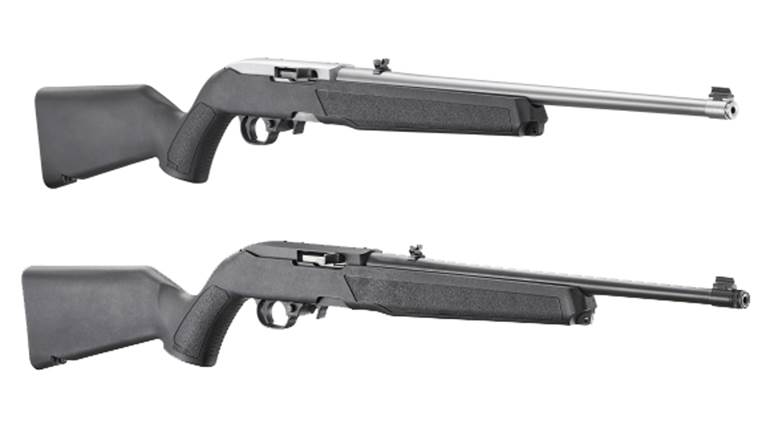
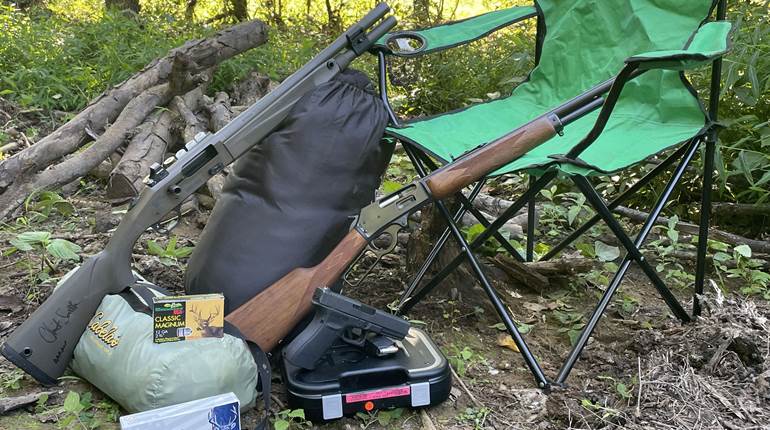
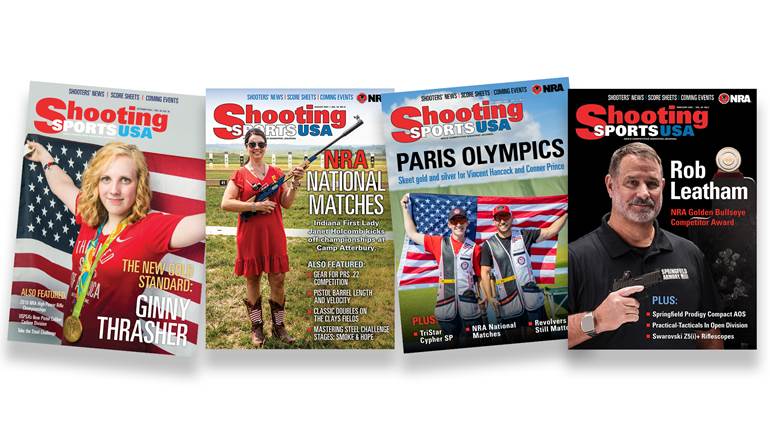
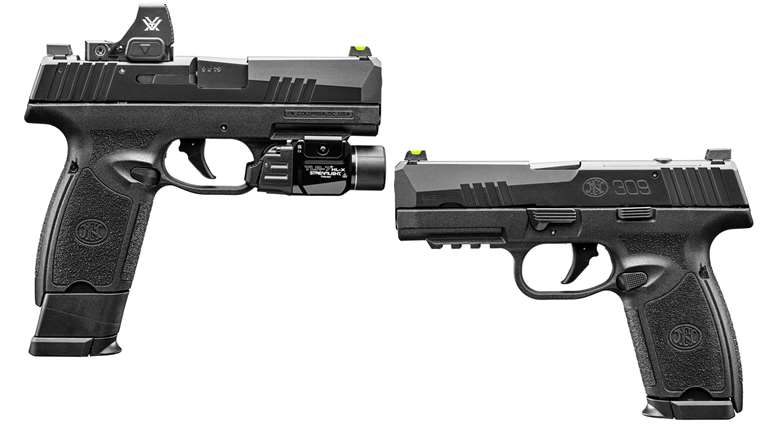

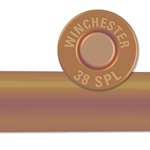
![Oconnor Small[67]](/media/bu2le2tp/oconnor-small-67.jpg?anchor=center&mode=crop&width=770&height=430&rnd=134126774953630000&quality=60)
![Oconnor Small[67]](/media/bu2le2tp/oconnor-small-67.jpg?anchor=center&mode=crop&width=150&height=150&rnd=134126774953630000&quality=60)
